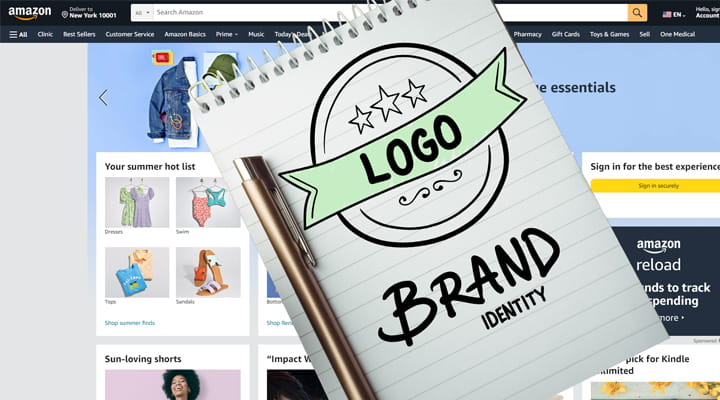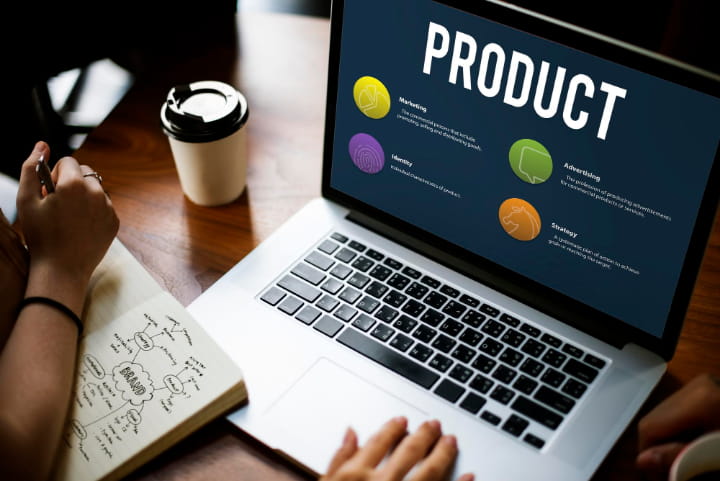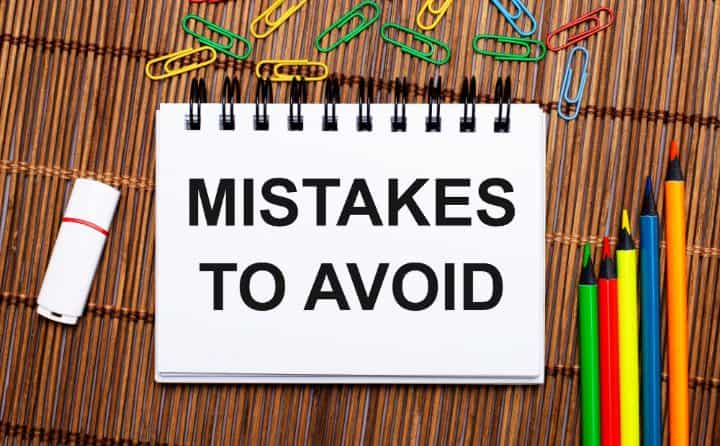
Starting an Amazon FBA business can appeal to aspiring entrepreneurs, especially those with limited budgets. Utilizing Fulfillment by Amazon (FBA) removes the need to handle shipping and logistics, allowing sellers to focus on product management and sales. The low barriers to entry and potential for growth make it an attractive option for individuals looking to start a business without investing an extensive amount of money.
To start an Amazon FBA business with little to no capital, one can begin by selling items they already possess. This may include items accumulated over time that are no longer needed and can be sold for a profit. By creating a free Amazon account, it is possible to begin listing and selling these products without incurring any fees upfront.
Once familiar with Amazon’s platform and the FBA process, sellers can explore product niches in demand, assess the competition, and analyze profitability. By carefully selecting the first products to invest in, it is possible to establish a successful Amazon FBA business even with limited resources, eventually scaling up as profits increase.
Understanding Amazon FBA with No Money
Starting an Amazon FBA business with no money is possible but requires creativity and hard work. To successfully launch a company with limited funds, one needs to be resourceful and focused on minimizing the most significant expenses.
- Initial Considerations:
- Starting with no money requires creativity and hard work.
- Success hinges on being resourceful and minimizing major expenses.
- Inventory Acquisition:
- A significant cost in FBA is purchasing inventory.
- Dropshipping:
- Allows sellers to manage inventory without physically handling products.
- Suppliers send products directly to customers, eliminating the need for bulk inventory.
- Low Startup Cost Products:
- Focus on items with minimal startup costs but profitable margins.
- Examples: handmade crafts, digital products, and repurposed material goods.
- Leverage personal skills and resources for unique, low-cost inventory.
- Understanding Amazon FBA Fees:
- Amazon’s fee structure varies by product category, size, weight, and storage duration.
- Knowledge of these fees can guide product selection to maximize profits and minimize costs.
- Market Research:
- Essential for success, especially with a limited budget.
- Utilize free online tools, forums, and social media for comprehensive research.
- Analyze target customer behaviors and preferences to identify market opportunities.
- Promotional Strategies:
- Focus on low-cost or free promotional methods.
- SEO: Optimize product listings for organic traffic.
- Amazon PPC Advertising: A potential avenue for visibility.
- Social Media: A platform for engagement and promotion.
A significant cost involved in starting an FBA business is purchasing inventory. To acquire inventory without spending money, sellers can explore various strategies. For example, dropshipping is an option for managing inventory and shipments without physically handling the products. Sellers can partner with suppliers, who directly send products to customers as orders are placed. This minimizes initial expenses because there is no need to invest in bulk inventory purchases.
Another approach is focusing on products with low startup costs while offering a profitable margin. Some examples include handmade crafts, digital products, or goods created from repurposed materials. Utilizing one’s existing skills and resources to create unique items can lead to low-cost inventory, opening the door to FBA success without spending money upfront.
One must also understand the fees associated with Amazon FBA, as they impact profitability. The Amazon FBA fee structure includes prices based on product category, item size, weight, and storage time in Amazon’s fulfillment centers. Knowing these fees helps sellers choose products with lower cost implications, thus maximizing profits while minimizing initial investments.
Gathering information about the market and competition is critical when starting an Amazon FBA business with no budget. Comprehensive market research can be conducted cheaply using free online tools, forums, and social media platforms. Analyzing the behaviors and preferences of target customers will help identify market gaps to pursue.
Finally, sellers should consider leveraging promotional strategies that don’t require substantial financial investment. For example, organic traffic can be generated through search engine optimization (SEO), optimizing product listings, utilizing Amazon PPC advertising, or employing social media.
To sum up, while starting an Amazon FBA business with no money might be challenging, it is not impossible. By being resourceful, minimizing costs, and finding innovative ways to sell products, sellers can succeed in the competitive FBA landscape without a substantial initial investment.
Establishing Your Business Model Without Money
Dropshipping vs Wholesale
Dropshipping is a cost-effective business model for beginners looking to start an Amazon FBA business without money. In dropshipping, you list products on Amazon and only order from suppliers after a customer orders. This model eliminates upfront inventory costs and allows you to compare product prices on other eCommerce platforms like eBay and Walmart. You can start generating revenue without significant investment by sourcing products at a lower price and listing them on Amazon with a good profit margin.
On the other hand, wholesale involves purchasing goods in bulk from suppliers and reselling them on Amazon. Although offering potentially higher profit margins than drop shipping, this method requires more initial capital to acquire inventory. Wholesale might not be the best option for entrepreneurs with minimal funds.
Private Label

A private label business model involves selling products others manufacture under your brand name. This model lets you differentiate your products from competitors and better control pricing and marketing strategies. However, starting a private label business with no money can be challenging.
One option is to negotiate favorable payment terms and conditions with suppliers, such as “net 30” or “net 60,” whereby you pay the supplier 30 or 60 days after receiving the products. This strategy may allow you to generate sales revenue before paying the supplier.
Additionally, you could consider preselling your products through crowdfunding platforms or pre-order campaigns to raise the necessary funds before placing an order with the supplier. By doing so, you can validate the market demand for your products and generate the capital needed for inventory.
In conclusion, starting an Amazon FBA business with no money is possible, but success will depend on your creativity, determination, and chosen business model. Dropshipping or adopting a private label model with innovative funding strategies could be the best options for entrepreneurs with limited funds.
Finding a Profitable Product in a Tight Budget
Product Research
One of the critical steps to starting an Amazon FBA business with little money is conducting thorough product research. Focus on finding products with high sales volume and low competition; these items will help maximize your earnings within a limited budget.
To start, explore popular product categories and identify items with rising demand. Utilize tools like Google Trends and Amazon’s best-sellers list for up-to-date information. Furthermore, look for products with attractive profit margins by analyzing your potential costs, including shipping and Amazon FBA fees. After narrowing down your options, estimate the sales potential for each product using online tools or historical data.
Competition Analysis
Another crucial aspect is competition analysis. Investigate existing competitors within your chosen product niche to understand the market landscape clearly. Determine the average product price, number of reviews, and overall product ranking.
Compare these metrics among your top competitors, taking note of any gaps or areas of opportunity. For example, products with high demand but few reviews may indicate an untapped market. Additionally, assess your competitors’ product listings for strengths and weaknesses to optimize your listing and gain a competitive edge.
Remember to avoid saturated markets, as this will increase your marketing costs and make it challenging to stand out. Finally, ensure you have a unique selling proposition to differentiate your product from competitors and attract customers despite a tight budget.
Sourcing Your Product with Free Tools
Finding Suppliers
When starting an Amazon FBA business with no money, it’s important to find suppliers that offer affordable products without compromising quality. A few free tools to help you find reliable suppliers include Google Keyword Planner and Google Trends. These tools can help identify trending products and popular search terms that buyers use, making it easier to find suppliers selling in-demand items.
Additionally, you can utilize online marketplaces, such as Alibaba and AliExpress, to find international suppliers. Start by browsing and filtering through categories relevant to your niche. You’ll likely find many potential suppliers. To narrow your choices, read reviews, compare prices, and assess suppliers’ responsiveness.
Negotiating Deals
After identifying potential suppliers, the next step is negotiating the best deals. One key aspect of successful negotiation is effective communication. Ensure you express your requirements clearly and discuss payment terms, shipping, and product customization options. Building trust with suppliers, demonstrating professionalism, and showing that you’re serious about doing business is essential.
Begin by contacting multiple suppliers and requesting quotes for the products you’re interested in selling. Compare the costs and terms, considering minimum order quantity, shipping fees, and product quality.
When negotiating, don’t hesitate to ask for discounts, especially if you’re planning to place a large or recurring order. A lower price per unit can significantly impact your profit margins. Also, be open to discussing payment terms that benefit both parties, such as staggered payments or extended payment deadlines.
Remember to stay informed about market trends and competitor pricing to avoid overpaying for products. By sourcing your products using these free tools and negotiation strategies, you can potentially start an Amazon FBA business with minimal investment, maximizing your chances for success in this competitive market.
Creating Your Amazon Listing
Product Description

Creating a compelling product description is crucial when starting an Amazon FBA business with no money. A well-written description can help persuade potential customers to purchase your product. Focus on highlighting the benefits and features of the product, addressing any pain points, and explaining how the product can solve the customer’s problem. Use bullet points to break down the information and make it more digestible for readers.
Product Photography
High-quality product photography for Amazon can attract customers when starting an Amazon FBA business with no money. Since you may not have the budget to hire a professional photographer, consider using your smartphone to take the pictures. Ensure that you capture images in good lighting with a clutter-free background. Take close-up shots to highlight the product’s features and show the product from different angles. If needed, enhance the quality of the images using accessible or affordable photo editing tools.
Keywords and SEO
Optimizing your Amazon FBA listing with relevant keywords and SEO techniques is crucial for increasing your product’s visibility. Research the most appropriate keywords related to your niche and product to do this. Tools like Google’s Keyword Planner or Amazon’s search bar can help you find the right keywords.
Next, strategically place these keywords in your product title, description, and bullet points. Remember not to overstuff your listing with keywords, which might lead to a negative customer perception. As you optimize your listing, ensure that you maintain a natural and easy-to-read tone, prioritizing the quality of information for potential customers.
Marketing Strategies without Money
When starting an Amazon FBA business with no money, it is crucial to use cost-effective marketing strategies. Two popular options with low or no upfront costs include PPC advertising and social media marketing.
PPC Advertising
Pay-per-click (PPC) advertising relies on strategically selecting keywords and crafting engaging ad content. When using PPC advertising on platforms like Amazon or Google, your ad budget will be based on clicks, allowing for close control of expenses.
To succeed in PPC advertising without a large budget, follow these steps:
- Research: Research relevant keywords with high search volume and low competition.
- Optimize: Structure your campaigns and ad groups to target specific niches or sub-categories.
- Analyze: Monitor your campaign performance and make necessary adjustments to improve efficiency.
By following these steps and focusing on high-quality ad content, you can maximize your return on investment (ROI) without spending significant money.
Social Media Marketing
Another approach to market your Amazon FBA business without a budget is utilizing social media platforms. Social media marketing offers the opportunity to reach a broad audience, engage with customers, and build brand awareness—all with minimal or no financial investment.
To get started with social media marketing, follow these recommended actions:
- Identify: Identify the social media platforms best suited for your target audience.
- Create: Establish a presence on these platforms by creating engaging content relevant to your niche.
- Interact: Engage with followers and customers, respond to inquiries, and offer valuable information about your products.
- Promote: Share any content that showcases your Amazon FBA business or promotes discounts or special offers to your followers.
Social media marketing can be time-consuming but yield significant results when executed correctly. You can grow substantially by leveraging these platforms while maintaining a low marketing budget. Consistency and authenticity are essential when interacting with potential customers online.
In conclusion, implementing PPC advertising and social media marketing strategies makes promoting your Amazon FBA business possible without significant financial investment.
Scaling Up Your Business
Consider implementing the following strategies to scale up your Amazon FBA business without investing much money initially. Launching more products within your niche can help attract a broader customer base. To select suitable additions to your product line, analyze the interests of your existing customers and cater to their needs.
Another practical approach is dropshipping, which involves partnering with a supplier who handles inventory management and shipping on your behalf. Concentrate on marketing the products on Amazon, allowing you to avoid investing in inventory upfront.
Affiliate marketing can boost your Amazon FBA business growth, especially if you have limited funds. Join the Amazon Associates program and promote products through your website, blog, or social media channels. This way, you will earn commissions from the purchases made through your referral links, giving you additional revenue.
Ensure you utilize effective marketing strategies such as running Amazon advertisements, search engine optimization, and social media marketing. These techniques can improve product visibility, drive traffic to your listings, and increase sales. Continuously monitor your marketing efforts and modify them to maintain consistent growth.
Lastly, focus on delivering excellent customer service, including responding promptly to customer inquiries and addressing concerns. Providing a seamless shopping experience for your customers can result in favorable reviews and word-of-mouth marketing, significantly contributing to business growth.
Addressing Common Mistakes

Starting an Amazon FBA business with limited funds can be challenging, but minimizing costs and maximizing profits is possible with the right approach. The key to success lies in avoiding common mistakes. One such mistake is not following the steps to set up a successful Amazon business. Researching the Amazon FBA business model is crucial. Choosing products based on data, optimizing listings, and monitoring performance is vital.
Entering the market by choosing the wrong product to sell can be costly. Before investing in inventory, meticulously research the market demand, competition, and profit margins. Accurate data analysis helps select high-potential items and avoid oversaturated products or poor sales performance.
Pricing can make or break your business. Starting with no money means operating on thin margins, so understanding the Amazon FBA fee structure and factoring in the cost of goods, shipping, storage, and advertising is critical. A competitive pricing strategy that ensures decent profit margins while remaining attractive to customers is vital for long-term success.
Ignoring customer feedback and reviews is another misstep. Online shoppers consider reviews and ratings before purchasing a product, so maintaining excellent seller ratings and promptly addressing customer concerns can play a significant role in building trust and credibility. Continuous improvement, based on feedback, helps improve the product and overall customer satisfaction.
Lastly, underestimating the importance of creating an optimized product listing can be detrimental. High-quality images, persuasive descriptions, and relevant keywords reinforce the visibility and attractiveness of your product to customers. A well-optimized listing leads to better search rankings and higher sales conversions.
An aspiring Amazon FBA seller should avoid common mistakes by adopting a strategic approach to product selection, pricing, and listing optimization. Moreover, paying close attention to customer feedback can help improve the buying experience, securing customer loyalty and boosting sales growth.
Frequently Asked Questions
How can I start selling on Amazon without any initial investment?
Starting an Amazon FBA business without any initial investment can be challenging but doable. Focus on acquiring inventory at no cost, such as unwanted items from friends or family, or searching for free items in online classifieds, garage sales, or thrift stores. Additionally, consider drop shipping, a method where you sell products without physically handling them, as the supplier ships orders directly to customers. For more guidance, visit this Reddit thread.
Is it possible to begin an Amazon FBA business with a low budget?
Yes, starting an Amazon FBA business on a low budget is possible. Begin by researching low-cost items with high demand and profit margins. Search for suppliers offering competitive prices and carefully manage your inventory levels to minimize storage fees. To reduce shipping costs, use Amazon’s Partnered Carrier program or consider processing orders yourself through the Fulfilled by Merchant (FBM) option. Learn more through this Amazon FBA for beginners guide.
What are some tips to start Amazon FBA for beginners with limited funds?
For beginners with limited funds, here are a few tips:
- Focus on a specific niche or product category.
- Research the market and find products with high demand and low competition.
- Look for cost-effective suppliers who allow smaller order quantities.
- Create a robust marketing strategy using free or low-cost platforms, such as social media and email marketing.
- Monitor your costs and profits closely to determine potential areas of improvement.
Can I profit from Amazon FBA if I start with a small budget?
Yes, you can profit from Amazon FBA with a small budget. You can generate revenue by identifying profitable niches, sourcing low-cost products, and employing cost-effective marketing tactics to attract customers. Remember that your initial profit margin may be small, but your business can grow with constant monitoring, adjustments, and scaling.
How much can a beginner with a low budget expect to make through Amazon FBA?
Profits for beginners with a low budget will vary depending on factors such as product choice, price, and marketing efforts. Setting realistic expectations and focusing on building a profitable business model is essential, which may take months to develop.
Is starting an Amazon FBA business as a beginner with no money worthwhile?
Starting an Amazon FBA business without funds is possible but may require more time and effort than when equipped with a budget. Success will depend on your creativity, market research, determination, and willingness to learn. While this approach may not be ideal, it presents an excellent opportunity for beginners to learn the ins and outs of the Amazon FBA platform before expanding their operations with investment.
Can I do Amazon FBA with no money?
While starting Amazon FBA with very little money is technically possible, it’s not practical or advisable for most people. You’ll still need funds for inventory, shipping, potential advertising, and other business-related expenses. Also, Amazon charges various fees, including monthly subscription and per-item fulfillment costs.
Do you need money to start Amazon FBA?
Yes, you do need money to start Amazon FBA. Initial costs include purchasing inventory, shipping products to Amazon’s fulfillment centers, setting up an Amazon seller account, and handling potential advertising or promotional activities. The exact amount required can vary based on the type of products you’re selling, how much inventory you start with, and other factors.
How much can a beginner make with Amazon FBA?
The potential earnings for a beginner selling on Amazon FBA can vary widely based on factors such as the product niche, competition, pricing strategy, and initial investment. Some beginners might see profits within their first few months, while others might take longer to break even. It’s essential to conduct thorough market research and understand your costs before diving in. As with any business, there are no guarantees of success or specific profit amounts.
How do I make money on Amazon with no money?
Making money on Amazon without an initial investment is challenging, but there are some strategies you can consider:
- Affiliate Marketing: You can sign up for the Amazon Associates program and promote products on your website, blog, or social media. You earn a commission for every sale made through your referral link.
- Kindle Publishing: Write and self-publish eBooks on Amazon’s Kindle platform. There’s no cost to publish, but marketing and promoting your book might require effort and potentially some financial investment.
- Amazon Mechanical Turk: This platform allows you to perform small tasks for pay. It’s not directly related to Amazon FBA but is a way to earn on Amazon.
- Dropshipping: While not typically advised because of potential issues with shipping times and customer service, some people attempt to dropship on Amazon, which reduces the need for upfront inventory investment.
Remember, while these methods might not require significant upfront investment, they will usually require considerable time, effort, and potentially some tiny costs.
Denes, with 20 years experience in logistics, holds a Logistics Manager degree from Budapest’s Logistics Association and has penned a thesis on mobile devices. Venturing into e-commerce, Denes specializes in Fulfilled By Amazon and passionately educates others about Amazon selling techniques.